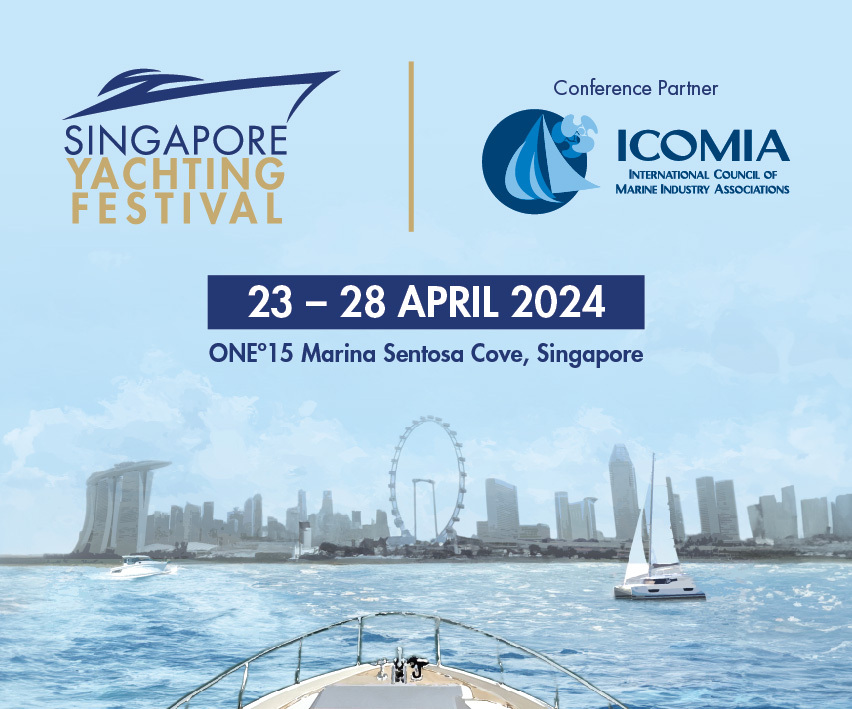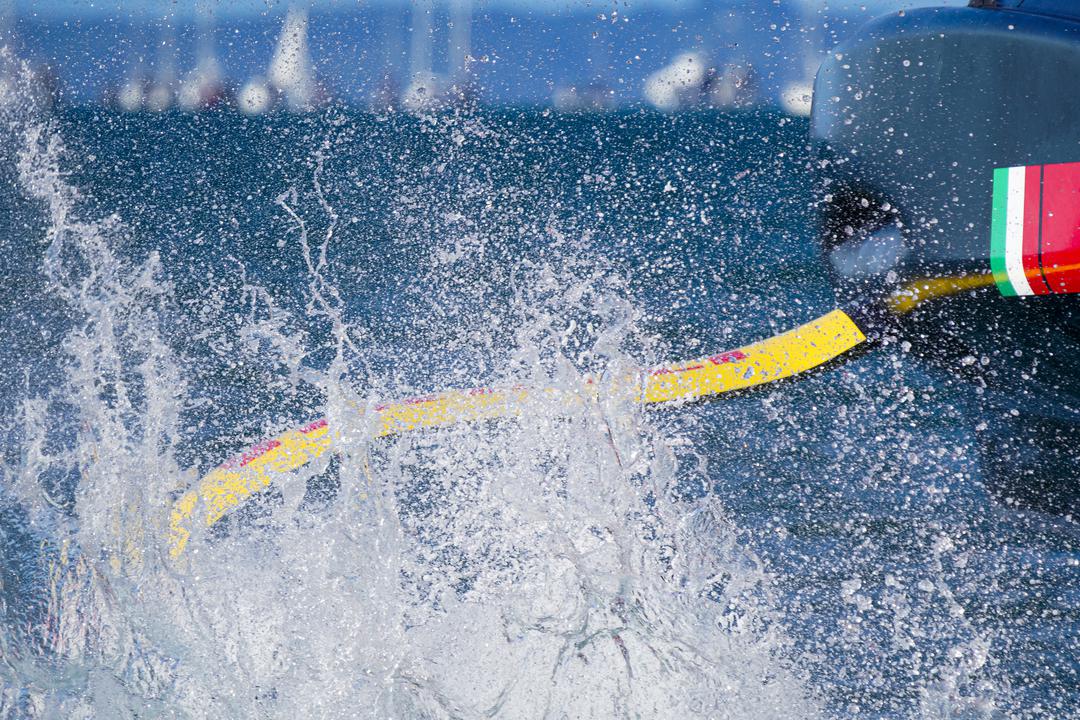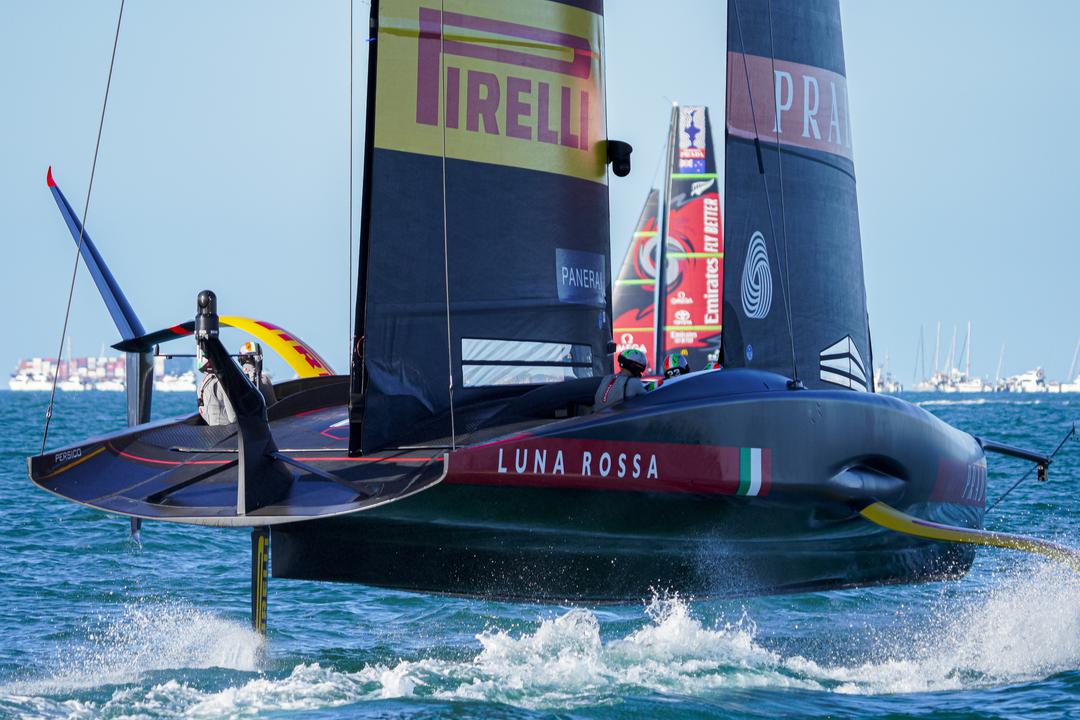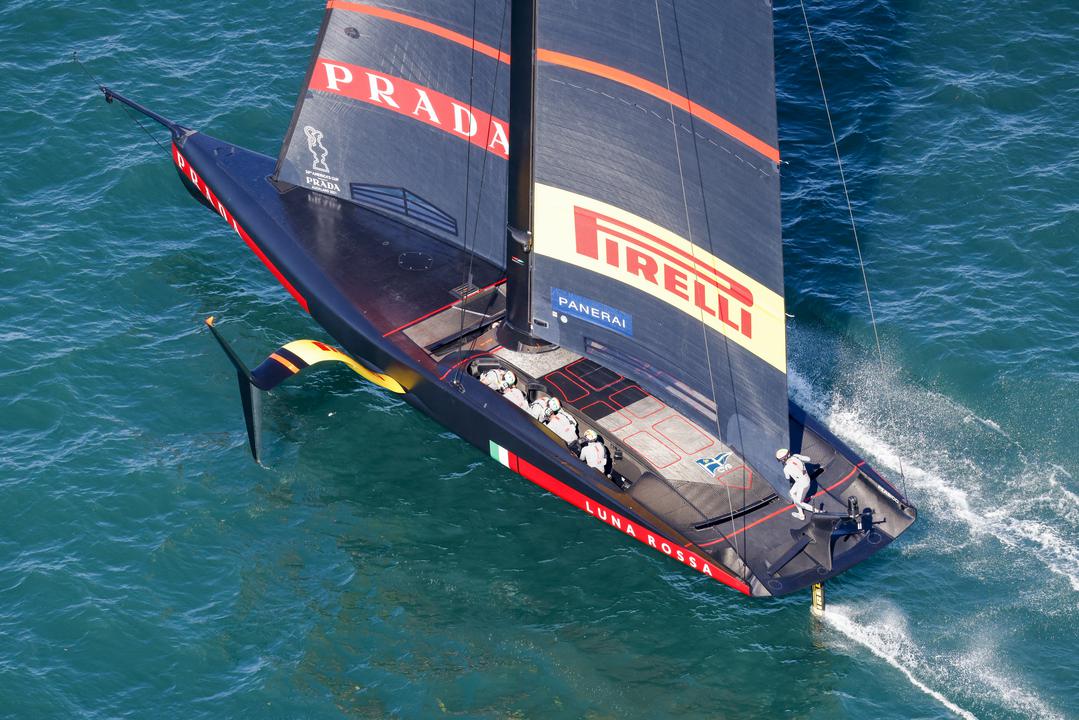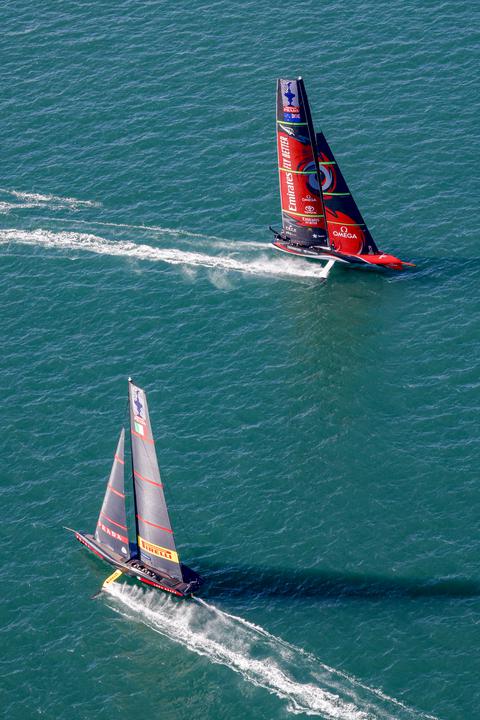Something in the air
With the 36th America's Cup tied at 3–3, Rebecca Hayter explores how it's not the boats that are evenly matched with one-another, but unevenly matched in equal measure.
Written by Rebecca Hayter
15 March 2021
In what has been the closest America’s Cup for decades, Emirates Team New Zealand (ETNZ) and Luna Rossa Prada Pirelli have so far traded wins for a three-all scoreboard. The boats are not evenly matched. It’s just that they are unevenly matched in equal measure.
The Italians have appeared to be stronger in the starts while the Kiwi’s strength is set on straight line speed. The Italians are more agile in the light conditions and the Kiwis, we think, will be fierce in the stronger breeze. And both teams are getting stronger, race by race, as they each learn more about their boats and each other.
Races 5 and 6 on Saturday, 13 March were a great example that the AC75 still has plenty to teach its eager pupils. In Race 5, ETNZ started on port entry and made a hard handbrake turn in the lower right-hand corner, looking good. Then they hit an invisible wall.
But just before it happened, a strange sound of panic was in Blair Tuke’s voice, as he realised the Kiwis were nearly out of fuel.
Air flow.
The Italians used their high mode as lethal as a Prada stiletto, crossing the line well ahead. And that was the race.
Heading into Race 6, ETNZ were on starboard entry and, although the Italians had just proved starboard entry could win the start, the odds were against success. But then came another strange sound: Panic in Jimmy Spithill’s voice as Luna Rossa Prada Pirelli hit a wall, about the same place as Emirates Team New Zealand had.
“Come on, boys,” Spithill called: “We’ve got to get it going.” But ETNZ was off to the start and calling the shots.
Later, Jimmy Spithill explained the coincidence as a phenomenon of light airs sailing in boats that sail up to four times the speed of the wind.
“The wind shadow is so much more than we’ve experienced before,” he said. “I think in the lighter air, you not only go through your own wind shadow but through the other boat’s shadow because you’re coming through from above. Both teams found themselves trapped themselves in a bubble and it’s very difficult to get out of it.”
In other words, as the AC75 sails down into the box, it creates disturbed air, which then drifts down with the wind at 10 knots. The boat then makes a hard turn just in time to bump into its own wind shadow as it comes down with the breeze – a function of sailing considerably faster than the true wind speed.
As Tom Cruise in Top Gun will confirm, the dirty, disturbed air that flows off a foil, whether it’s a wing or a sail, does not provide lift. Maverick couldn’t fly through it and an AC75 struggles to sail through it, albeit with less dire consequences. It’s an invisible, effective weapon on the racecourse. But this time, the boats were gassed by their own gas.
Yacht designer Christian Stimson says the effect was probably enhanced on a day of predominantly light airs in a stable wind direction: “The air column is pretty stable, not mixing much from above or the sides – as with gusts or shifts – so the ‘hole’ takes a long time to fill in. It’s like watching smoke from a bonfire or chimney; it disperses faster on a windy day but stays pretty localised on a light day.”
“The double skinned mainsails are quite grunty and extract a lot of energy from the air by creating a big pressure differential between the windward, high pressure side and the leeward low-pressure side,” he added. “The air flow off the leech is very disturbed, the same phenomenon that a cyclist experiences when overtaken by a logging truck.
“I think it’s no coincidence the issues occur as they are abeam the committee boat end buoy as that’s the point it all meets in time and space.”
Exactly what we’d expect from a boat that was stolen from the future.


